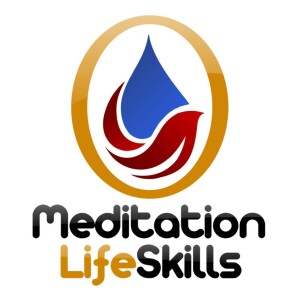
Meditation Life Skills Podcast - Learn How To Meditate
Education:How To

Learn How To Use Your Breath For Concentration And Attention
 2022-01-27
2022-01-27
The simplest way to practice mindful breathing is to pay attention to each inhalation and exhalation as they occur.
Free Weekly Newsletter To Learn Meditation So You Can Meditate More Effectively HERE...Ideally, you'll be sitting or even lying down in a comfortable position while doing this. Open or closed eyes are fine, as is a soft gaze where you are not concentrating on anything in particular with your gaze.
Set aside a specific time each day to practice this exercise, but it can also be beneficial to do so when you're feeling anxious or stressed. Practicing mindful breathing on a regular basis may make it easier to do so when faced with challenging situations.
A deep inhale, followed by a hold of your breath, followed by a long, exhale through your mouth, can be helpful when you're trying to calm yourself down in a stressful situation (4 seconds).
It may be helpful to pay attention to your chest rising and falling or the sensation in your nostrils as you inhale and exhale.
As you do this, you may find that your thoughts or physical sensations cause your attention to wander. It's fine. Try to gently bring your attention back to your breath as soon as you become aware that this is happening.
How to Use Your Breath to Concentrate and Refocus Your Attention1. Find a relaxed and comfortable position before you begin. If you prefer, you can sit on a chair or on the floor with an extra pillow. Keep your spine straight, but don't overtighten it. Place your arms wherever you feel most comfortable. Place your tongue on the roof of your mouth, if that's more comfortable for you.
2. Recognize and invite relaxation in your body. Relax and become curious about your body's sensations, touch, and connection to the floor or chair while seated here. Relax any areas of tightness or tension you may be experiencing. Breathe.
3. Pay attention to the beat of your own breathing. Your natural breath flow can be felt—in and out. There's nothing you need to do other than just breathe normally. Not too long, not too short, but just right. Breathe into your body and notice where you feel it. It's possible that it's in your tummy. In the chest, throat, or nostrils, for example.
Take a deep breath at a time and see if you can become aware of the sensations associated with it. Breaths come and go as quickly as they come and go. It's okay if you can't feel your breath in every part of your body. At different times of the day, we are more in tune with certain parts of our bodies than others.
4. It's possible that your mind wanders to unrelated topics. It's not a big deal if this happens. It's completely normal. Be aware that your thoughts have drifted. Think about the word "thinking" or "wandering" and so
Support the show
_________________________________________________
"Be the person your soul wishes you to be."
Don Weyant/Founder
Meditation Life Skills Podcast
Download and listen to at least one episode each week to start your path toward greater clarity, balance, and harmony with yourself and the world around you.
Whether you're a seasoned meditator or just getting started, each episode delivers practical tips and insightful knowledge to help you unleash the power of your mind, cultivate inner peace, and live a more fulfilling life.
Thank you for being a part of the Meditation Life Skills Podcast!
Disclaimer: This website or podcast should not be used to diagnose or treat a health problem or disease. If you have a medical condition or situation, contact your healthcare provider.
More Episodes
Create your
podcast in
minutes
- Full-featured podcast site
- Unlimited storage and bandwidth
- Comprehensive podcast stats
- Distribute to Apple Podcasts, Spotify, and more
- Make money with your podcast
It is Free
- Privacy Policy
- Cookie Policy
- Terms of Use
- Consent Preferences
- Copyright © 2015-2024 Podbean.com





